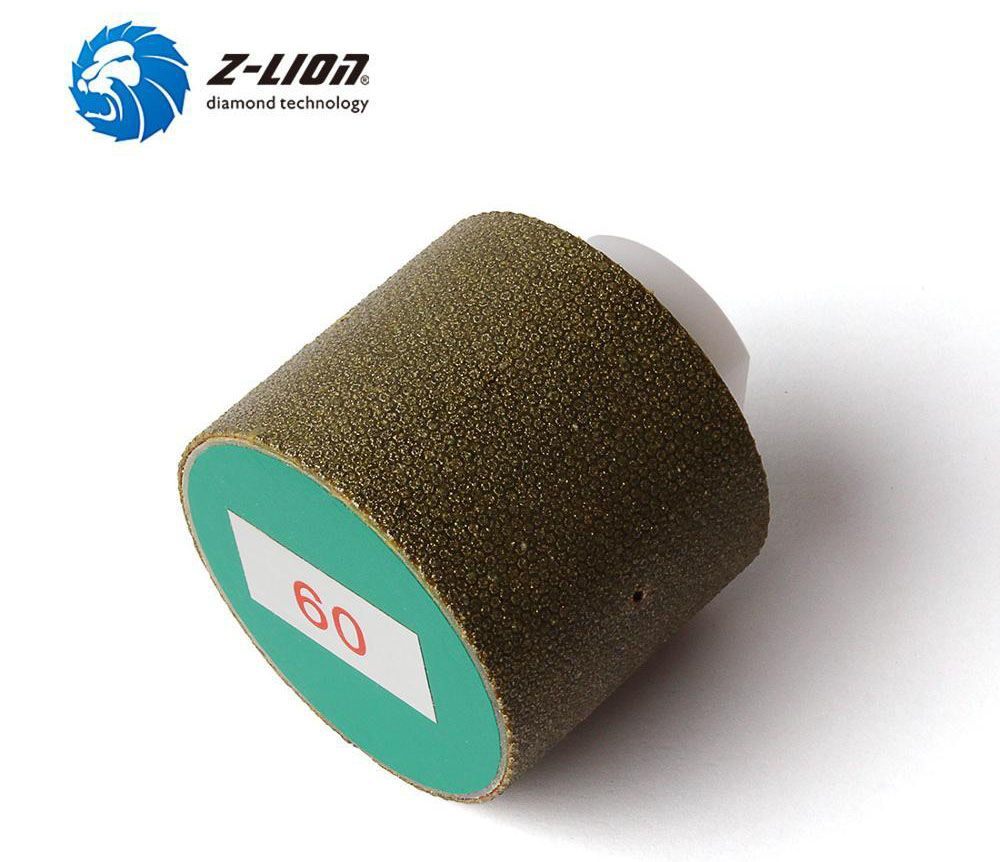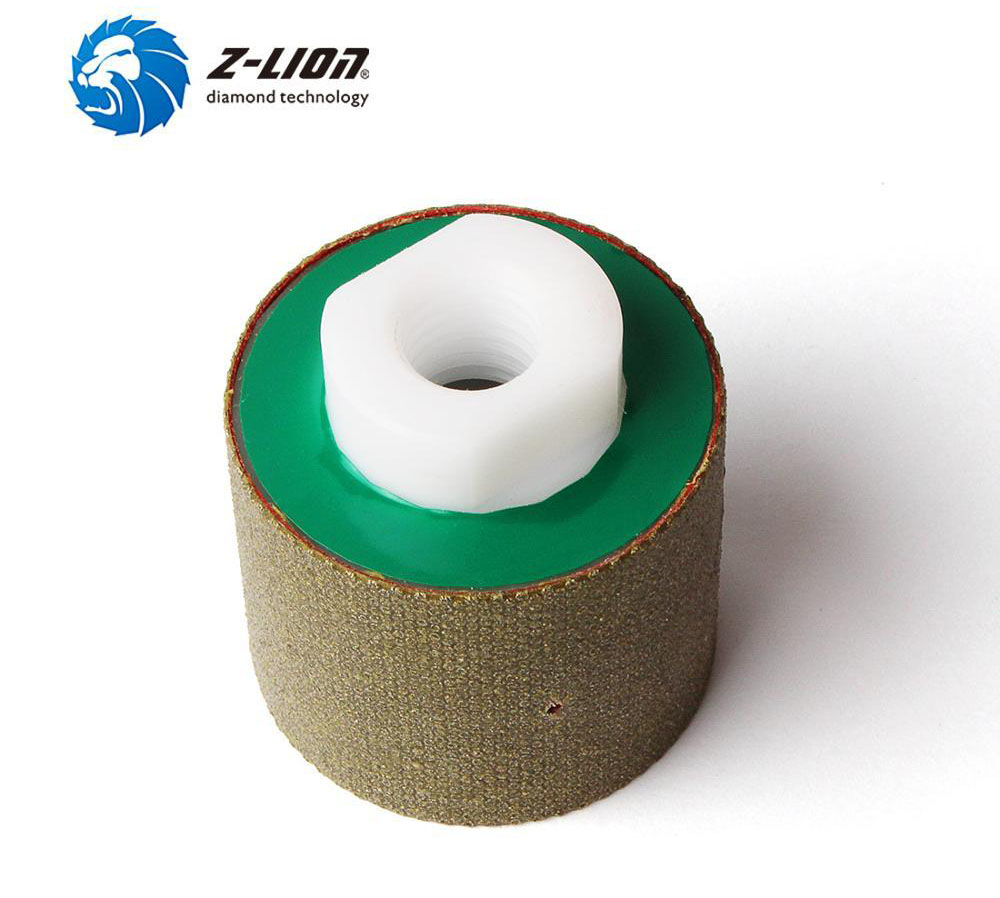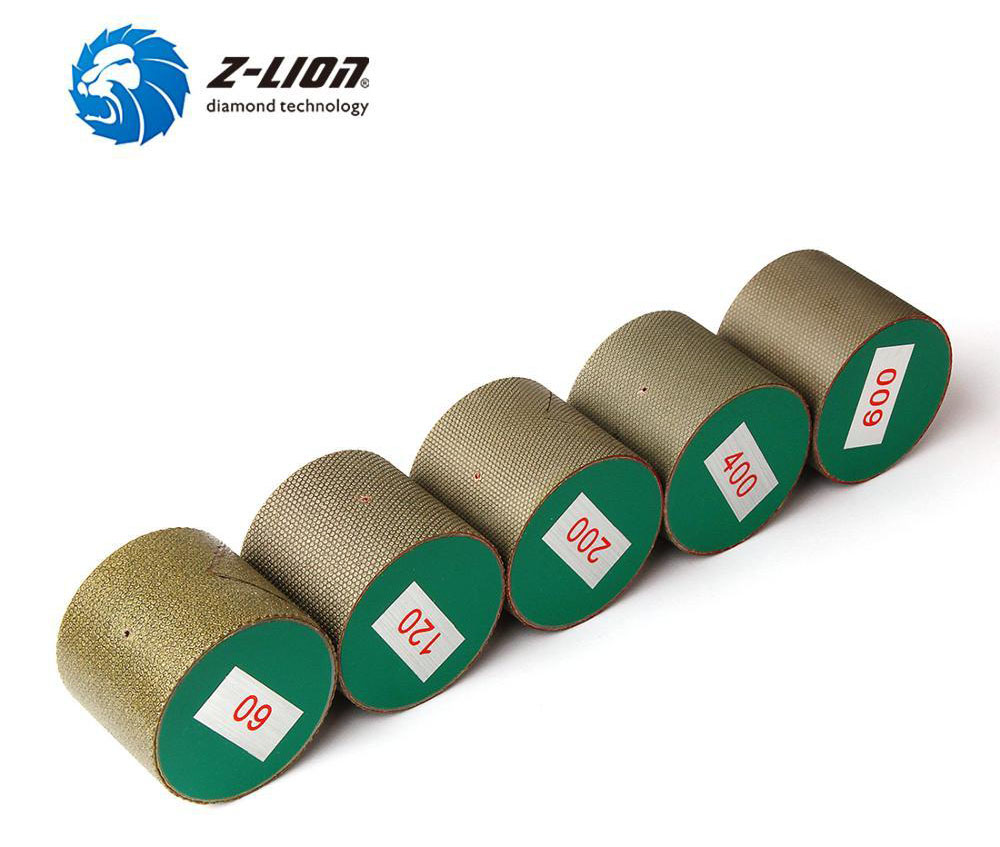1. High hardness
The main advantage of electroplated grinding wheels is their high hardness. This is because the electroplated metal bond used to make this wheel is usually made of nickel or a nickel-cobalt alloy. This binder has a dense structure that enhances the bond and overall hardness. Electroplated grinding wheels provide significantly higher hardness than bronze and resin abrasives. The compact construction of electroplated grinding wheels offers benefits beyond hardness. When used for grinding, these wheels offer better stability because their abrasive grains are firmly attached to the metal substrate. This ensures that the grinding wheel produces uniform results even under high stress. In addition, this feature helps to extend the life of the grinding wheel.
2. The lowest porosity
One factor that sets electroplated grinding wheels apart from others in their class is the fact that they have the lowest porosity of any abrasive tool.
Porosity is a measure of how many voids exist within a material. The porosity of the grinding wheel can have a major impact on the efficiency and durability of the tool. For example, common sintered grinding wheels can have a porosity as high as tens of percent, which reduces their efficiency. Resin or bronze-bonded abrasives also have higher porosity than plated products.
On the other hand, the porosity of electroplated grinding wheels is almost zero. This makes them the densest, most reliable abrasive tools in the industry. The low porosity of electroplated grinding wheels is also beneficial when considering their durability. Grinding tools with optimum strength and stability are essential when grinding a wide variety of materials. Electroplated grinding wheels have virtually zero porosity and provide maximum strength and stability, making them ideal for grinding applications that require precision and accuracy. Unlike sintered wheels, which have open pores, electroplated wheels are fully metal bonded. This means that the bonded abrasive particles are bonded directly to the metal substrate. This results in a more even distribution of abrasive grains across the wheel, enabling it to produce consistent results with each use. The low porosity of plated wheels also helps eliminate clogging issues. Clogging occurs when the wheel has too much porosity, resulting in a buildup of abrasive debris called swarf. This can significantly affect the performance of the tool. Electroplated grinding wheels are designed to prevent clogging by providing a dense, uniform bond, ensuring that chips are removed from the grinding surface.

3. Strongest combination
A significant advantage of electroplated diamond grinding wheels is the tight bond between metal and abrasive material. The metal bond in the working layer is embedded most in the grit, creating a bond that is stronger and more durable than other types of wheels. This combination ensures adequate contact between the abrasive and the workpiece, resulting in a more efficient grinding process. The consolidation of the metal-bonded working layer is also stronger, which means maximum holding power. This function is essential when grinding materials of different hardness.
Electroplated diamond wheels can handle higher concentrations, making them ideal for grinding hard metals like tungsten carbide. With its superior holding power, the abrasive material will not fall off prematurely, making it unmatched for powder molding.

4. Highest concentration
For grinding wheels made of powder, the abrasive concentration in the working layer is generally 50% to 150%, and the abrasive volume is 10% to 30%. The abrasive concentration of the electroplated diamond grinding wheel is about 200%, and the abrasive volume can reach more than 65%. This high concentration of abrasive material significantly increases service life and improves abrasive performance. The high concentration of abrasive material in electroplated diamond grinding wheels is due to the unique manufacturing process.
Compared with traditional grinding wheels formed by mixing abrasive grains with a binder and pressing them into shape, electroplated diamond grinding wheels are produced by electroplating a layer of diamond grains on a metal substrate. This process ensures that the diamond particles are evenly distributed and firmly attached to the metal substrate, creating a tight bond for maximum efficiency during grinding.
In addition to these four advantages,, electroplated diamond grinding wheels have several other advantages.
For one, they are extremely durable and can withstand high temperatures and pressures without losing their integrity or shape. They also provide a clean and precise grinding surface, making them ideal tools for precision machining applications. Another advantage of electroplated diamond grinding wheels is their versatility. They can be used in a variety of materials, including superhard materials such as tungsten carbide and ceramics. This versatility makes them a popular choice in several industries including automotive, aerospace, and electronics.
Post time: Jun-06-2023

